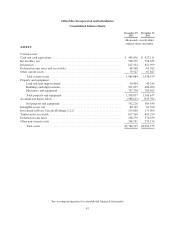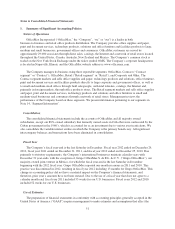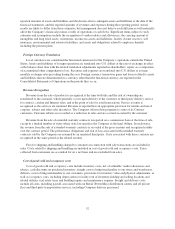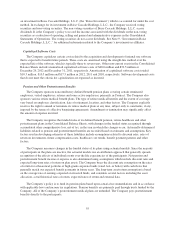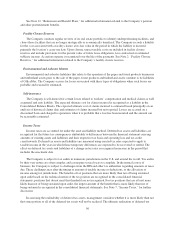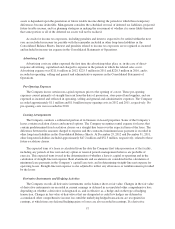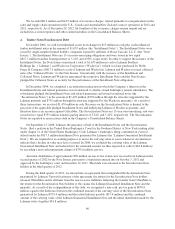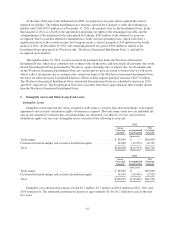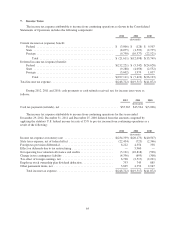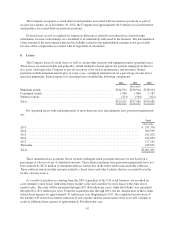OfficeMax 2012 Annual Report Download - page 93
Download and view the complete annual report
Please find page 93 of the 2012 OfficeMax annual report below. You can navigate through the pages in the report by either clicking on the pages listed below, or by using the keyword search tool below to find specific information within the annual report.assets is dependent upon the generation of future taxable income during the periods in which those temporary
differences become deductible. Management considers the scheduled reversal of deferred tax liabilities, projected
future taxable income, and tax planning strategies in making the assessment of whether it is more likely than not
that some portion or all of the deferred tax assets will not be realized.
Accruals for income tax exposures, including penalties and interest, expected to be settled within the next
year are included in income tax payable with the remainder included in other long-term liabilities in the
Consolidated Balance Sheets. Interest and penalties related to income tax exposures are recognized as incurred
and included in income tax expense in the Consolidated Statements of Operations.
Advertising Costs
Advertising costs are either expensed the first time the advertising takes place or, in the case of direct-
response advertising, capitalized and charged to expense in the periods in which the related sales occur.
Advertising expense was $211.6 million in 2012, $225.3 million in 2011 and $228.3 million in 2010, and is
recorded in operating, selling and general and administrative expenses in the Consolidated Statements of
Operations.
Pre-Opening Expenses
The Company incurs certain non-capital expenses prior to the opening of a store. These pre-opening
expenses consist primarily of straight-line rent from the date of possession, store payroll and supplies, and are
expensed as incurred and reflected in operating, selling and general and administrative expenses. The Company
recorded approximately $1.1 million and $1.0 million in pre-opening costs in 2012 and 2011, respectively. No
pre-opening costs were recorded in 2010.
Leasing Arrangements
The Company conducts a substantial portion of its business in leased properties. Some of the Company’s
leases contain escalation clauses and renewal options. The Company recognizes rental expense for leases that
contain predetermined fixed escalation clauses on a straight-line basis over the expected term of the lease. The
difference between the amounts charged to expense and the contractual minimum lease payment is recorded in
other long-term liabilities in the Consolidated Balance Sheets. At December 29, 2012 and December 31, 2011,
other long-term liabilities included approximately $47.2 million and $52.3 million, respectively, related to these
future escalation clauses.
The expected term of a lease is calculated from the date the Company first takes possession of the facility,
including any periods of free rent and any option or renewal periods management believes are probable of
exercise. This expected term is used in the determination of whether a lease is capital or operating and in the
calculation of straight-line rent expense. Rent abatements and escalations are considered in the calculation of
minimum lease payments in the Company’s capital lease tests and in determining straight-line rent expense for
operating leases. Straight-line rent expense is also adjusted to reflect any allowances or reimbursements provided
by the lessor.
Derivative Instruments and Hedging Activities
The Company records all derivative instruments on the balance sheet at fair value. Changes in the fair value
of derivative instruments are recorded in current earnings or deferred in accumulated other comprehensive loss,
depending on whether a derivative is designated as, and is effective as, a hedge and on the type of hedging
transaction. Changes in fair value of derivatives that are designated as cash flow hedges are deferred in
accumulated other comprehensive income loss until the underlying hedged transactions are recognized in
earnings, at which time any deferred hedging gains or losses are also recorded in earnings. If a derivative
57


